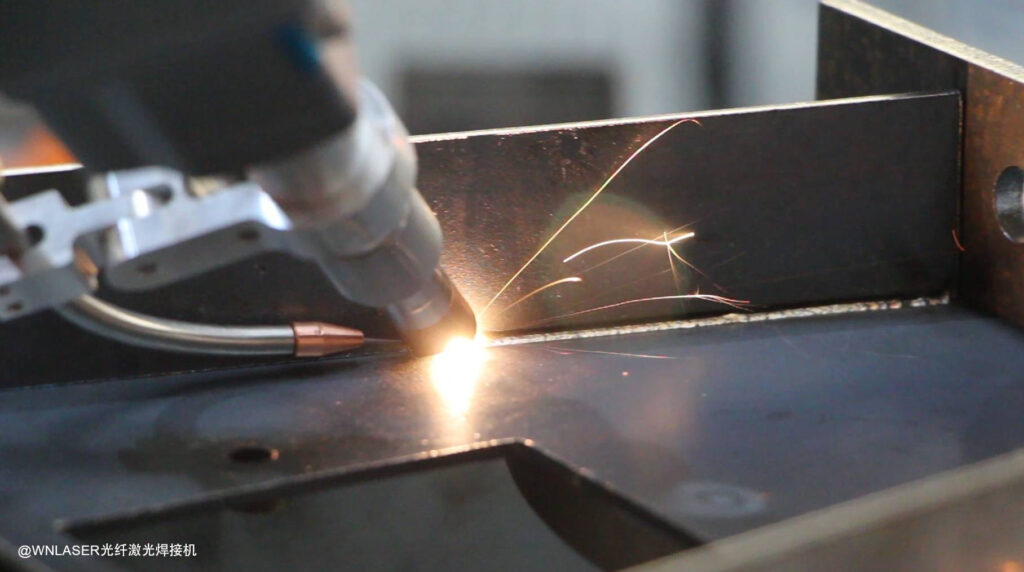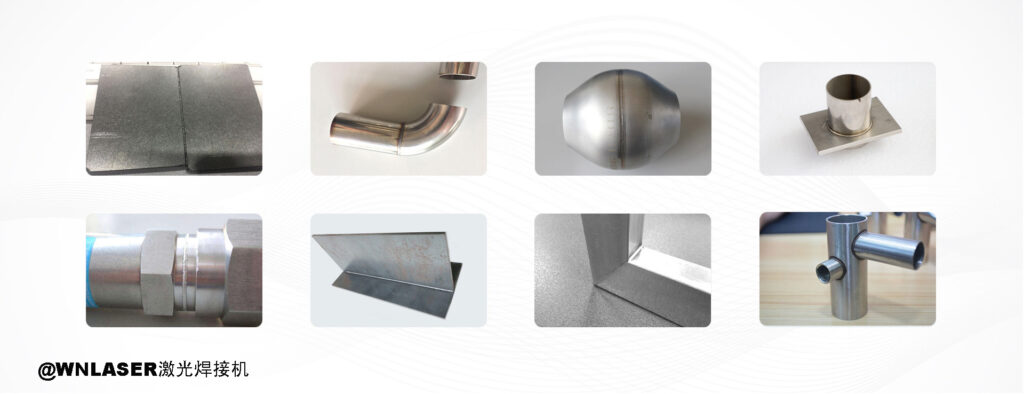What is Laser Welding?


111
Laser welding is a modern fabrication process that uses laser technology in order to achieve precise and efficient welds. It involves a highly concentrated beam of light which acts as a heat source. The laser beam delivers a controlled amount of energy to a specific location, creating a strong bond between materials. This advanced non-contact process offers various benefits and drawbacks.
Traditional Welding Methods

There are several traditional welding methods still in use today, including:
Tungsten inert gas (TIG) welding. This arc welding method employs the use of a non-consumable tungsten electrode to heat the workpiece and melt the filler (if present) to produce the weld.
Metal inert gas (MIG) welding. This arc welding method uses a consumable wire component—serving as both the electrode and the filler material—to produce the weld.
Spot-welding. This welding method utilizes a pair of electrodes to clamp workpieces together and pass an electric current between them to create the weld.
1

1
Advantages of Laser Welding

High welding speed
Laser welding is many times faster (up to 5 to 10 times faster) than traditional methods. Welding speeds vary depending on the type and power of the laser generator used. High welding speeds allow more parts to be produced per hour, which means faster turnaround times and higher productivity. Additionally, laser welding can be integrated with automated equipment, which allows them to run for longer periods.
Less heat
In laser welding operations, the heat affected zone (HAZ) is much smaller and the total heat input is much lower than traditional welding operations.
Lower risk of thermal distortion
The problem with the traditional methods is that they do not deliver this heat only at the weld seam, but also in the surrounding material. The result is bending, stress, and other negative impacts on the material near the welds.
Lasers on the other hand, have enormous power density. In other words, they can deliver their heat extremely locally at the seam, leaving the surrounding materials in better condition.
High precision
In laser welding, the laser beam can be controlled and focused on a small area. This permits the welding of components with high precision. Its tailorable spot size makes laser welding best suited for delicate or thin metals.
Higher Accuracy
Laser welding produces a very narrow laser beam that can be focused very precisely on the area to be welded, even in areas as small as millimeters in diameter. In addition to more precise control of the welding process, it also avoids wastage and errors of welding material and ensures consistent quality.
Reduce post-weld treatment costs
The process of traditional welding and laser welding is to transfer heat at the junction of two surfaces. When welding using traditional methods, materials can be subject to bending, stress, and other negative effects. However, the laser has a huge power density, the width of the heat-affected zone on both sides of the weld is narrow, and the thermal damage and performance loss of the material near the weld are reduced. The deformation of the samples is therefore less than that of samples welded by many other processes.
Grinding is usually not required after laser welding, which can significantly reduce post-processing costs. Having such a decorative weld seam also helps to enhance the appearance of the product and make a good first impression on the customer.
Versatility
Laser welding can reach inaccessible parts and implement non-contact long-distance welding, offering great flexibility. In recent years, the adoption of optical fiber transmission technology in YAG laser processing has made laser welding more widely used and more convenient for automatic integration.
Different laser setups can weld just about anything and everything: thick steel plates for the shipping industry, precious metals for jewelry, dissimilar metals like aluminum and steel, or the copper contacts on electric car batteries.
There have even been some successful attempts (though this is still experimental) to weld ceramics, a notoriously hard-to-weld class of materials.
Easy to work
Traditional welding is easy to automate. The method can also be mastered manually with knowledge and practice. The manufacturing industry finds it easy to understand traditional welding methods due to legacy operations.

Disadvantages of Laser Welding

High upfront costs
All of these advantages come at a cost, literally. The initial acquisition cost of laser setups can easily be double or triple the cost of traditional systems. But laser welding pays for itself quickly with its superior speed, precision, and versatility. The efficiency orientation of laser welding enables companies to optimize production, reduce material waste and increase overall profitability. In summary, the per-unit cost is lowered. If you have sufficiently high volumes, the investment pays dividends.
Low gap tolerance
It requires high assembly accuracy for the weldment, and the beam position on the workpiece should not deviate significantly. This is because the spot size after laser focusing is small and the weld is narrow, making it susceptible to welding defects when the workpiece assembly or beam positioning is inaccurate.
So this decrease in gap-tolerance means you need to make sure your upstream processes/suppliers can reliably meet strict tolerance levels.
Limited application
While a laser welding machine offers excellent advantages in many applications, it also has certain limitations, such as it is less suitable for welding thicker materials and cannot be used for certain types of joints. Also, certain materials, such as highly reflective surfaces, may not be suitable for laser welding. In such cases, alternative welding methods such as arc welding or e-book welding may be more appropriate.
Conclusion

Laser welding has established its place among modern welding processes due to its numerous advantages. It offers precision, reduced thermal impact, and ease of use, making it suitable for various industries. The technology allows for efficient joining of materials, resulting in high-quality welds.
However, the high initial cost of laser beam welding equipment may be a deterrent to some businesses looking to invest in this technology. A proper analysis of ROI is necessary before making the decision to implement laser welding. While the upfront costs may appear overwhelming, the long-term benefits could potentially offset these costs.
In summary, laser welding is a viable solution for many applications, particularly those requiring precision and minimal thermal impact. Advancements in technology continue to improve its ease of use, making it an attractive option for industries seeking to optimize their welding processes. Nevertheless, businesses should carefully weigh the initial costs against the potential benefits before incorporating laser welding into their operations.
To learn more about laser welding in action or if you have more questions, WNLASER is happy to discuss your specific application with you to help you make the right decision.



